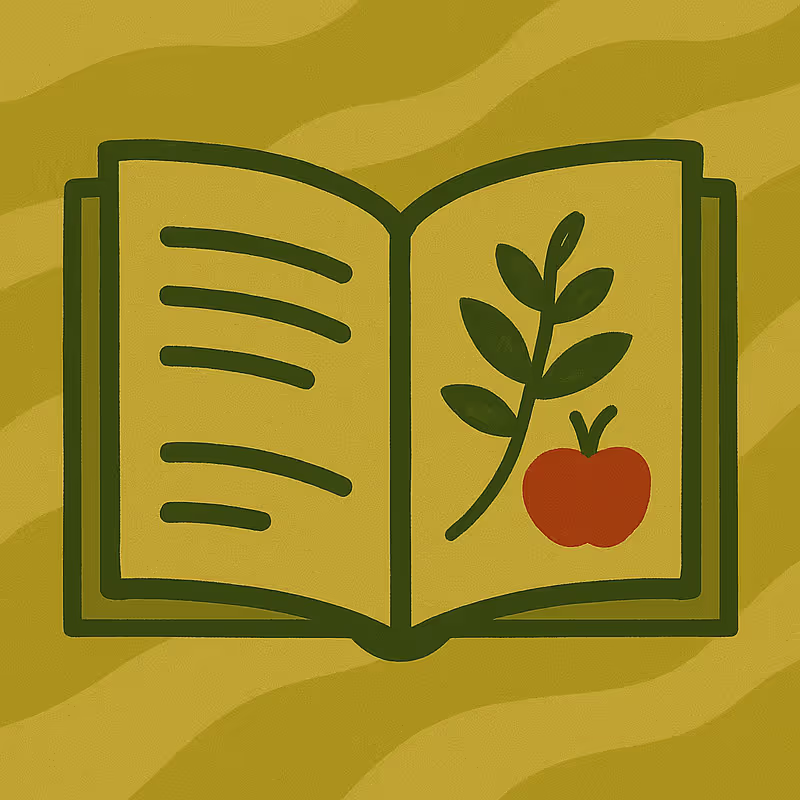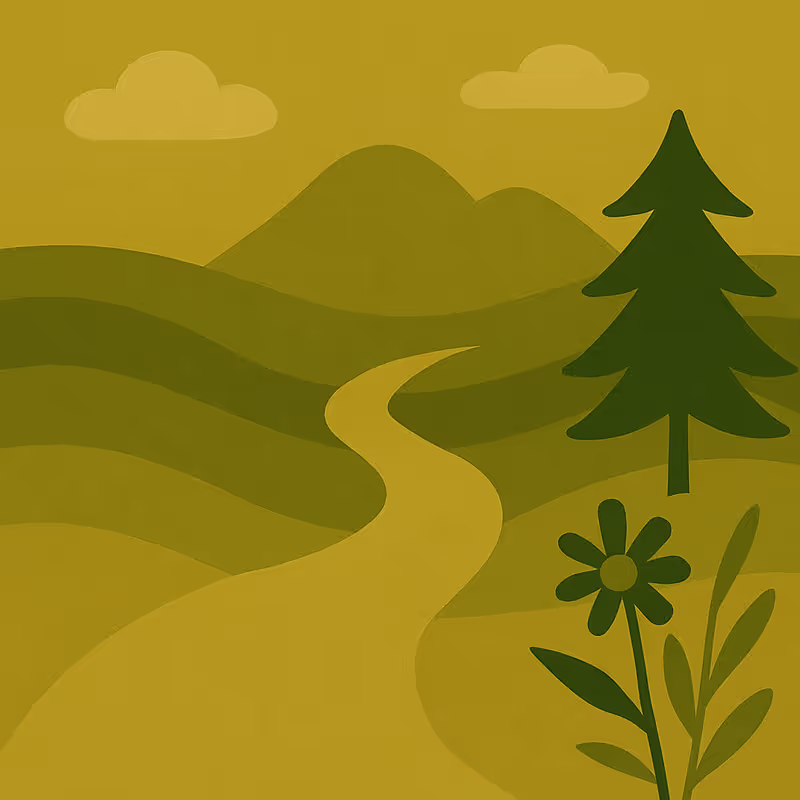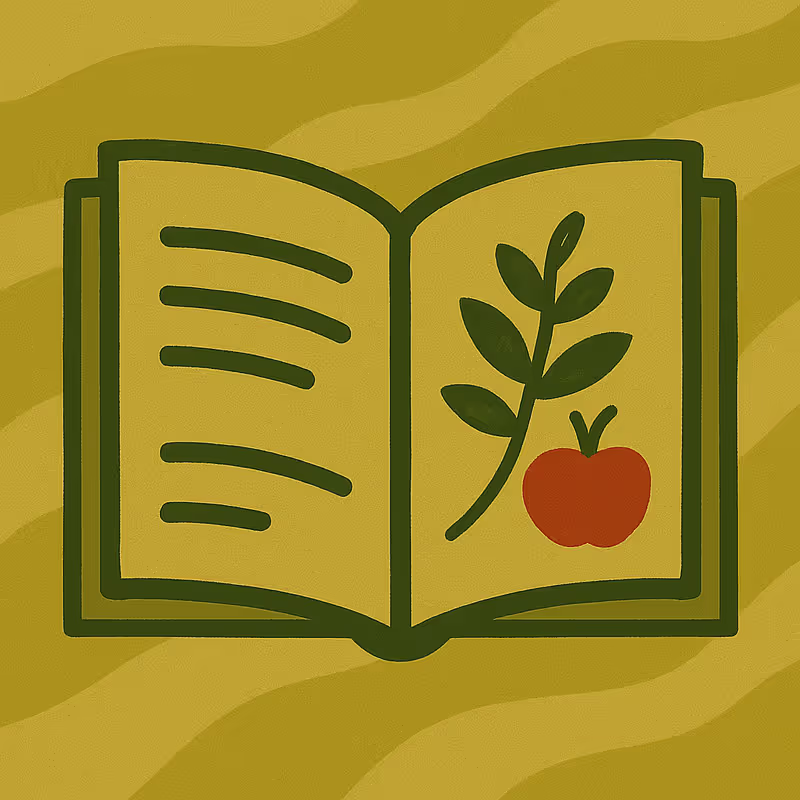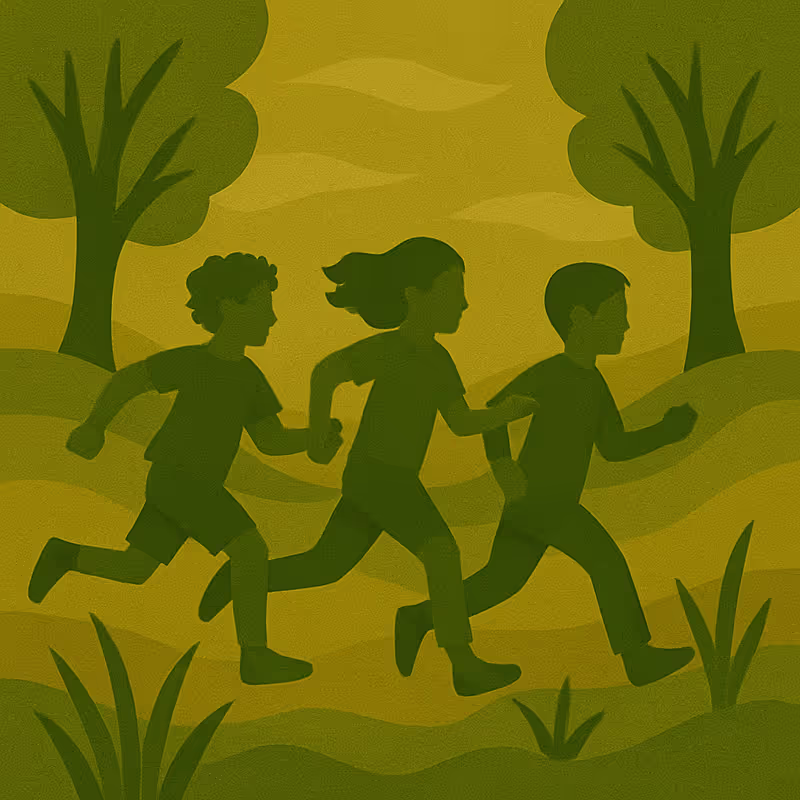Overview
As the title implies, the output of the activity is a cookbook composed of recipes that your students collect.
You can make this into a physical or digital cookbook and distribute it around the school (including at the canteen, if there is one), with students’ families and even within the local community.
Learning objectives
This activity gives students the opportunity to reflect on the cultural and ecological dimensions of food.
By engaging with older generations to collect traditional recipes, students are not only introduced to diverse food practices but are also encouraged to recognise the value of agrobiodiversity (the variety of life essential for agriculture) which is closely tied to local climates, knowledge systems, and histories.
The process helps preserve food knowledge that is often passed down informally and is at risk of being lost.
Link with the other resources and duration
This activity works best after the lessons on Biodiversity and the natural world in crisis and Food sovereignty for a just and biodiverse future.
You can also work with your students on the Cookbook as a standalone activity.
Introduction
As described in the Biodiversity and Food sovereignty modules, the food we eat around the world is becoming more and more uniform. Diets from countries that have very different ecosystems and climates are increasingly similar. Seed diversity is drastically decreasing, as we are planting the same few species of crops globally.
We are also losing touch with eating seasonally, especially in the Global North. If you are somewhere in Europe, you may be able to buy strawberries at any point of the year. However, their biodiversity and ecological footprint, as well as taste, will be very different depending on whether you buy them in season, or not.
The interlinkages between food and biodiversity not only constitute an environmental issue - because of all the negative consequences the industrial food system has - but also a cultural one. Food is a central component of cultures around the world, a frequent love language and an expression of identity, tradition, and belonging passed on through generations.
Pre-lesson preparation
Ahead of the lesson:
1. Homework for students
Students should come prepared for this activity. Their homework task is to interview a grandparent, older relative, neighbour or friend.
The interview task is to:
- Ask a grandparent, older relative, neighbour or friend about a traditional or favourite old recipe from where they live or where they come from. Focus on those recipes that may be less in use now.
- Write down the recipe and any special story, memory or insight connected to making the recipe, eating the food, or growing an ingredient that’s used in the recipe.
- Look into the ingredients used, and if any of them are no longer common.
- Bring your recipe and the insights you gained to class.
Optional
You can also ask students to cook these dishes with the people they interviewed and take pictures of the cooked meal!
If students are older and have easy access to a food garden, they can be asked to take pictures of native food crops and bring them to class. These could also be integrated into the cookbook.
2. Teacher’s preparation
As the teacher, you can prepare for the class by researching food crops that are native to the region or country where you teach and gathering images. You can present these images to your students as printouts, or in a digital format.
In the classroom, you can spark discussions on why students think preserving old varieties is important - both from biodiversity and cultural aspects. The images of the native food crops that you have prepared in advance can be presented after the students have shared the recipes they gathered.
If the students are also tasked with taking pictures of native food crops, these can be used as well.
Activity plan
1. In the classroom
1.1. Sharing and discussion
Students should share the recipes they have gathered with the class. If you have many students, this can be done in groups.
While students are sharing their recipes, you can prompt the discussions by asking questions such as:
- Have you tried these dishes before? Do you eat them often?
- Were there any ingredients that are surprising or unfamiliar?
- Do you think our diets have changed? If yes, how do these changing diets affect (agro)biodiversity?
- How do the traditional dishes relate to the culture of the place where you live, or you are from? How would you feel if these dishes got forgotten in the future?
1.2. Visual connection
If you decide to collect images of native food crops, you can share these images after the recipes have been discussed. The crops mentioned by students can be matched to the pictures.
If students have written the recipes on pieces of paper, you can set the images next to them, arranging the physical cookbook.
Use showing images, and discussions around the cookbook as a starting or concluding point when talking about seed saving, seasonal eating, and the importance of preserving agrobiodiversity.
2. Creating the cookbook
If you would like to create a cookbook as an output of this activity, you would need to either digitalise the recipes students brought, scan them and compile them in one physical or digital file.
Once all the recipes and images have been gathered in one place, come up with a name for the cookbook along with the students.
Distribute this cookbook in the school, to the parents, in the local community, or put it on the school website.
You could even sell the cookbook to raise money for a biodiversity charity or suitable school project such as a school garden. To plan and implement a school garden, you will find comprehensive resources on the Royal Horticultural Society’s School Gardening section (or a similar website, depending on where you live). on where you live).
To promote your cookbook, you could organise a school or community event.
Debrief
Debriefing is a collective discussion method that can help students process and make sense of their thoughts and emotions and identify next steps for action in a safe space, following creative methods and interactive lessons.
As you know your students best, you can carefully think of questions according to the age and knowledge of your students.
Check the instructions in the separate Debriefing activity to help you organise the debrief.


















